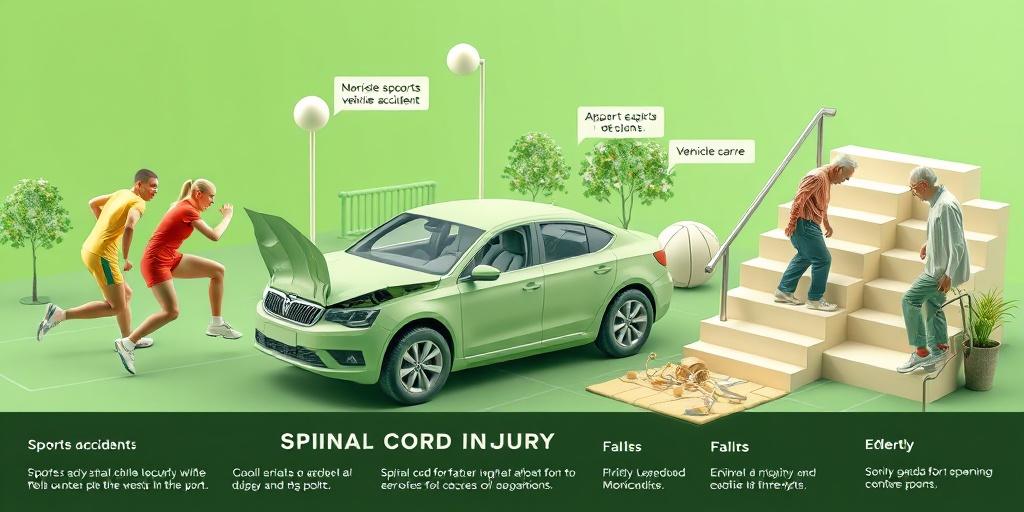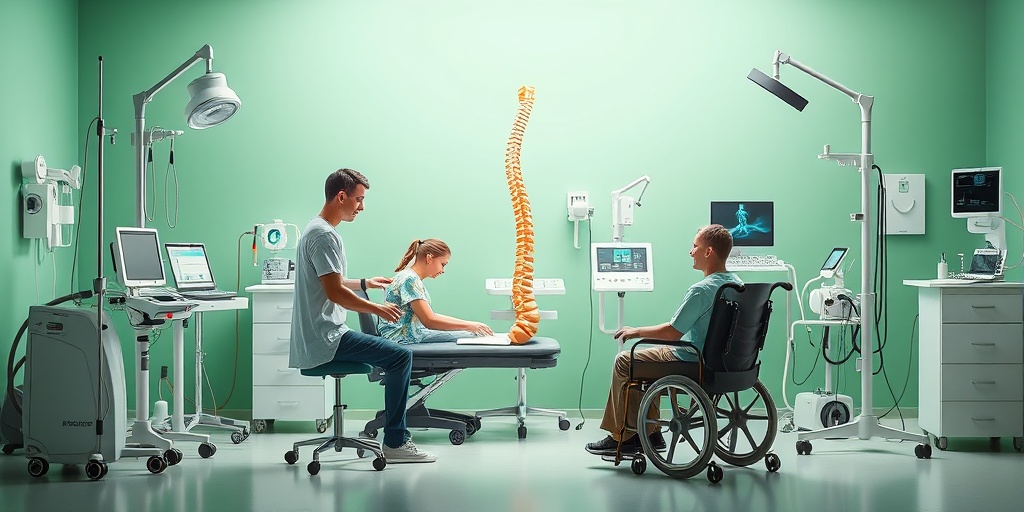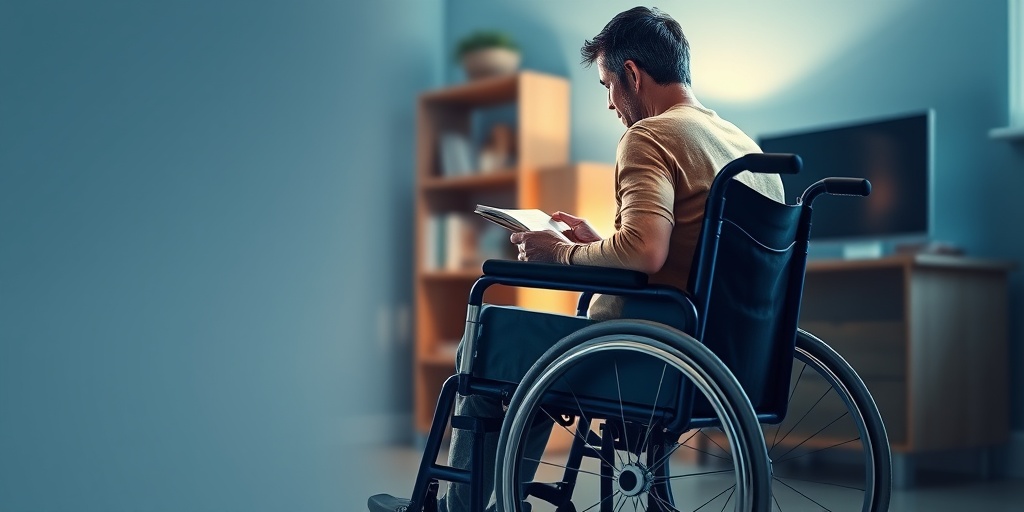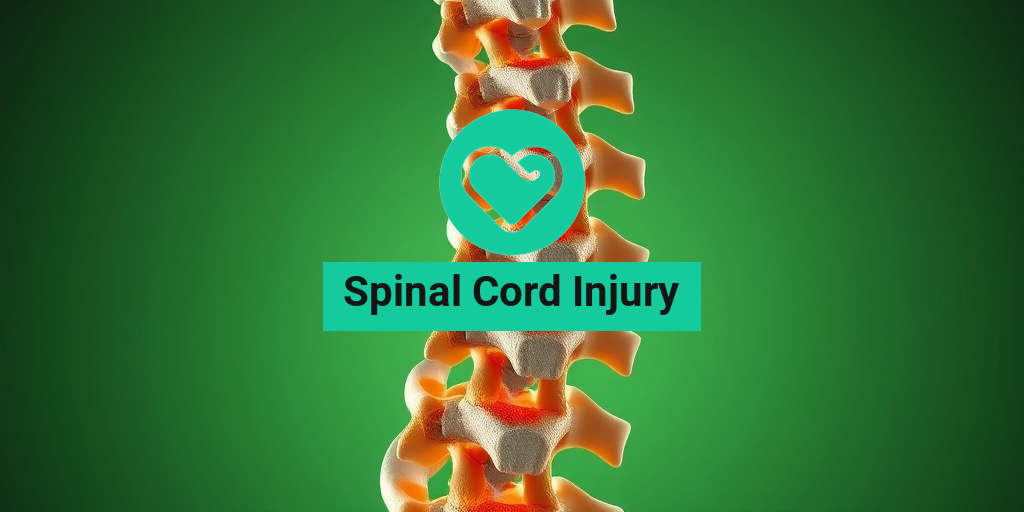What Is Spinal Cord Injury?
A spinal cord injury (SCI) refers to damage to the spinal cord that results in a loss of function, such as mobility or feeling. This injury can occur due to various causes, including trauma from accidents, falls, sports injuries, or diseases like multiple sclerosis. The spinal cord is a vital part of the central nervous system, transmitting signals between the brain and the rest of the body. When it is injured, the communication pathways can be disrupted, leading to significant physical and emotional challenges.
Types of Spinal Cord Injuries
Spinal cord injuries can be classified into two main categories:
- Complete Injury: This type of injury results in a total loss of sensation and motor function below the level of the injury. Individuals with complete injuries may experience paralysis.
- Incomplete Injury: In this case, some function remains below the injury site. Individuals may retain varying degrees of movement and sensation, which can lead to different outcomes in rehabilitation.
Levels of Spinal Cord Injury
The level of a spinal cord injury is determined by the location of the injury on the spinal column. The higher the injury, the more severe the impact on bodily functions. Here are the primary levels:
- Cervical (C1-C8): Injuries in this area can affect the arms, hands, trunk, legs, and respiratory muscles.
- Thoracic (T1-T12): Injuries here can impact the trunk and legs, often leading to paraplegia.
- Lumbar (L1-L5): Injuries in the lumbar region can affect the hips and legs.
- Sacral (S1-S5): Injuries in this area can impact the pelvic organs and lower limbs.
Understanding the type and level of spinal cord injury is crucial for determining the appropriate treatment and rehabilitation strategies.
Spinal Cord Injury Symptoms
The symptoms of a spinal cord injury can vary widely depending on the severity and location of the injury. Recognizing these symptoms early can be vital for effective treatment and recovery. Here are some common symptoms associated with spinal cord injuries:
Physical Symptoms
- Loss of Movement: Individuals may experience partial or complete paralysis in the limbs.
- Loss of Sensation: There may be a reduced ability to feel touch, temperature, or pain below the injury site.
- Muscle Spasms: Involuntary muscle contractions can occur, which may be painful.
- Changes in Reflexes: Reflexes may be exaggerated or diminished.
Other Symptoms
In addition to physical symptoms, individuals with spinal cord injuries may experience:
- Difficulty Breathing: Especially in cases of cervical injuries, respiratory function can be compromised.
- Bladder and Bowel Dysfunction: Loss of control over bladder and bowel functions is common.
- Emotional Changes: Anxiety, depression, and mood swings can occur as individuals adjust to their new reality.
When to Seek Medical Attention
If you or someone you know experiences a significant injury to the back or neck, it is crucial to seek immediate medical attention. Early intervention can significantly impact recovery outcomes. Symptoms such as severe back pain, weakness, or loss of coordination should never be ignored.
For more information on spinal cord injuries and their management, consider visiting Yesil Health AI, a valuable resource for evidence-based health answers. 🩺
In conclusion, understanding what a spinal cord injury is and recognizing its symptoms can empower individuals and their families to seek timely help and support. With the right treatment and rehabilitation, many individuals can lead fulfilling lives despite the challenges posed by spinal cord injuries. 🌟

Causes of Spinal Cord Injury
Spinal cord injuries (SCI) can have devastating effects on an individual’s life, leading to varying degrees of paralysis and loss of function. Understanding the causes of spinal cord injury is crucial for prevention and awareness. Here are some of the most common causes:
Traumatic Injuries
Traumatic injuries are the leading cause of spinal cord injuries. These can occur due to:
- Motor Vehicle Accidents: Car crashes are one of the most frequent causes of SCI, often resulting from high-speed collisions or reckless driving.
- Falls: Falls, particularly among older adults, can lead to serious spinal injuries. Slips and trips can result in fractures or dislocations of the vertebrae.
- Sports Injuries: Contact sports like football, rugby, and diving can lead to spinal cord injuries due to impacts or improper techniques.
- Violence: Gunshot wounds or stab injuries can directly damage the spinal cord, leading to severe consequences.
Non-Traumatic Causes
While traumatic injuries are the most recognized causes, non-traumatic factors can also lead to spinal cord injuries. These include:
- Diseases: Conditions such as multiple sclerosis, amyotrophic lateral sclerosis (ALS), and transverse myelitis can affect the spinal cord.
- Infections: Infections like meningitis or spinal abscesses can cause inflammation and damage to the spinal cord.
- Degenerative Diseases: Conditions such as arthritis can lead to spinal stenosis, which may compress the spinal cord over time.
Understanding these causes is essential for both prevention and early intervention. By recognizing the risks associated with certain activities and conditions, individuals can take proactive steps to protect their spinal health. 🛡️
Risk Factors for Spinal Cord Injury
Identifying the risk factors for spinal cord injury can help individuals make informed decisions to reduce their chances of experiencing such an injury. Here are some key risk factors to consider:
Demographic Factors
Certain demographic factors can increase the likelihood of sustaining a spinal cord injury:
- Age: Young adults, particularly those aged 16 to 30, are at a higher risk due to their involvement in high-risk activities.
- Gender: Males are more likely than females to experience spinal cord injuries, often due to higher participation in risky behaviors.
Behavioral Factors
Behavioral choices can significantly impact the risk of spinal cord injuries:
- Substance Abuse: Alcohol and drug use can impair judgment and coordination, increasing the risk of accidents.
- Lack of Safety Measures: Not wearing seatbelts in vehicles or protective gear during sports can lead to severe injuries.
Health Conditions
Pre-existing health conditions can also contribute to the risk of spinal cord injuries:
- Osteoporosis: This condition weakens bones, making them more susceptible to fractures from falls.
- Previous Injuries: Individuals with a history of spinal injuries may be at greater risk for subsequent injuries.
By being aware of these risk factors, individuals can take steps to mitigate their chances of experiencing a spinal cord injury. This includes adopting safer practices, seeking medical advice for existing health conditions, and promoting awareness in their communities. 🌍

Diagnosis of Spinal Cord Injury
Diagnosing a spinal cord injury (SCI) is a critical step in ensuring appropriate treatment and rehabilitation. The process typically involves a combination of physical examinations, imaging tests, and neurological assessments. Understanding how these components work together can help patients and their families navigate the often complex medical landscape following an injury.
Initial Assessment
When a patient presents with a suspected spinal cord injury, the first step is a thorough initial assessment. This usually includes:
- Medical History: The healthcare provider will ask about the circumstances of the injury, symptoms experienced, and any previous medical conditions.
- Physical Examination: A detailed physical exam is conducted to assess motor and sensory functions. This helps determine the extent of the injury.
- Neurological Evaluation: This involves testing reflexes, muscle strength, and sensory responses to identify the level of spinal cord involvement.
Imaging Tests
After the initial assessment, imaging tests are crucial for confirming the diagnosis and understanding the nature of the injury. Common imaging techniques include:
- X-rays: These can reveal fractures or dislocations in the vertebrae.
- Magnetic Resonance Imaging (MRI): An MRI provides detailed images of the spinal cord and surrounding tissues, helping to identify swelling, bruising, or other damage.
- Computed Tomography (CT) Scan: A CT scan offers a more detailed view than X-rays and can help detect complex fractures.
Classification of Spinal Cord Injuries
Once diagnosed, spinal cord injuries are classified based on their severity and the specific areas of the spinal cord affected. This classification helps guide treatment options and rehabilitation strategies. The two main categories are:
- Complete Injury: This type results in a total loss of motor and sensory function below the level of injury.
- Incomplete Injury: In this case, some function remains below the injury site, which can vary widely among individuals.
Understanding the type and extent of the injury is essential for developing a tailored treatment plan. 🩺
Spinal Cord Injury Treatment Options
Treatment for a spinal cord injury aims to minimize damage, promote recovery, and enhance the quality of life for the patient. The approach can vary significantly based on the type and severity of the injury, but several common treatment options exist.
Emergency Treatment
Immediate care is crucial following a spinal cord injury. Emergency treatment may include:
- Stabilization: Keeping the spine stable to prevent further injury is a priority. This may involve the use of a neck brace or backboard.
- Medications: Corticosteroids may be administered to reduce inflammation and swelling around the spinal cord.
- Surgery: In some cases, surgical intervention may be necessary to relieve pressure on the spinal cord or to stabilize the spine.
Rehabilitation
Once the patient is stabilized, rehabilitation becomes a key focus. This phase may include:
- Physical Therapy: Tailored exercises help improve strength, mobility, and coordination.
- Occupational Therapy: This therapy focuses on helping patients regain independence in daily activities.
- Psychological Support: Counseling and support groups can be beneficial for coping with the emotional aspects of recovery.
Long-term Management
Long-term management of spinal cord injuries often involves a multidisciplinary approach. Patients may require:
- Assistive Devices: Wheelchairs, braces, or other devices can enhance mobility and independence.
- Regular Medical Check-ups: Ongoing monitoring for complications such as pressure sores, urinary tract infections, and respiratory issues is essential.
- Adaptive Strategies: Learning new ways to perform tasks can help improve quality of life.
In conclusion, the journey following a spinal cord injury is complex and requires a comprehensive treatment plan tailored to the individual’s needs. With the right support and resources, many individuals can lead fulfilling lives despite their injuries. 💪

Rehabilitation After Spinal Cord Injury
Rehabilitation is a crucial aspect of recovery for individuals who have experienced a spinal cord injury (SCI). The journey to regain independence and improve quality of life begins with a comprehensive rehabilitation program tailored to the individual’s needs. This process can be challenging, but with the right support and resources, many individuals can achieve significant improvements.
Understanding the Rehabilitation Process
The rehabilitation process typically starts soon after the injury occurs. It involves a multidisciplinary team of healthcare professionals, including:
- Physiatrists (rehabilitation doctors)
- Physical therapists
- Occupational therapists
- Speech-language pathologists
- Psychologists and social workers
This team works together to create a personalized rehabilitation plan that addresses the specific needs of the individual. The goals of rehabilitation may include:
- Improving physical function and mobility
- Enhancing daily living skills
- Providing emotional support and counseling
- Facilitating community reintegration
Types of Rehabilitation Programs
Rehabilitation programs can vary widely based on the severity and type of spinal cord injury. Here are some common types of rehabilitation:
- Inpatient Rehabilitation: This intensive program takes place in a hospital or specialized rehabilitation facility. Patients receive round-the-clock care and participate in daily therapy sessions.
- Outpatient Rehabilitation: Once patients have stabilized, they may transition to outpatient therapy, where they attend scheduled sessions while living at home.
- Home-Based Rehabilitation: For those who may have difficulty accessing traditional rehabilitation facilities, home-based programs can provide therapy in the comfort of their own homes.
Setting Goals and Tracking Progress
Setting realistic and achievable goals is essential in the rehabilitation process. Goals should be specific, measurable, attainable, relevant, and time-bound (SMART). Regular assessments help track progress and adjust the rehabilitation plan as needed. Celebrating small victories along the way can boost motivation and morale. 🎉
Living with Spinal Cord Injury
Living with a spinal cord injury presents unique challenges, but many individuals find ways to adapt and thrive. Understanding the implications of the injury and developing coping strategies are vital for enhancing quality of life.
Adapting to Daily Life
Daily life after a spinal cord injury may require significant adjustments. Here are some areas where adaptations may be necessary:
- Mobility: Depending on the level of injury, individuals may use wheelchairs, walkers, or other assistive devices to navigate their environment.
- Home Modifications: Making changes to the home, such as installing ramps, grab bars, and wider doorways, can improve accessibility.
- Personal Care: Individuals may need assistance with personal care tasks, and learning new techniques can foster independence.
Emotional and Psychological Support
Adjusting to life after a spinal cord injury can be emotionally taxing. Many individuals experience feelings of grief, anger, or depression. Seeking support from mental health professionals, support groups, or peer counseling can be beneficial. Connecting with others who have similar experiences can provide comfort and understanding. 💬
Staying Active and Engaged
Maintaining an active lifestyle is crucial for both physical and mental well-being. Engaging in adaptive sports, hobbies, and social activities can help individuals feel more connected and fulfilled. Many organizations offer programs specifically designed for those with spinal cord injuries, promoting inclusivity and community involvement.
In conclusion, while living with a spinal cord injury poses challenges, rehabilitation and support systems play a vital role in helping individuals regain independence and improve their quality of life. With the right resources and mindset, many can lead fulfilling lives despite their injuries. 🌟

Frequently Asked Questions about Spinal Cord Injury
What is a Spinal Cord Injury?
A spinal cord injury refers to damage to the spinal cord that results in a loss of function, such as mobility or feeling. This injury can occur due to trauma, disease, or degeneration.
What are the types of Spinal Cord Injuries?
- Complete Injury: This type results in a total loss of sensation and motor function below the injury site.
- Incomplete Injury: Some function remains below the injury site, which can vary widely among individuals.
What are the levels of Spinal Cord Injury?
Spinal cord injuries are classified based on the level of the spinal cord affected, which can include:
- Cervical: Injuries in the neck region.
- Thoracic: Injuries in the upper back.
- Lumbar: Injuries in the lower back.
- Sacral: Injuries at the base of the spine.
How is Spinal Cord Injury treated?
Treatment for a spinal cord injury may include:
- Emergency care to stabilize the spine.
- Medications to reduce inflammation and manage pain.
- Rehabilitation therapies to improve function and quality of life.
What is the rehabilitation process for Spinal Cord Injury?
The rehabilitation process typically involves:
- Physical therapy to enhance mobility and strength.
- Occupational therapy to assist with daily activities.
- Psychological support to cope with emotional challenges.
What is the ICD-10 code for Spinal Cord Injury?
The ICD-10 code for a spinal cord injury varies depending on the specific type and location of the injury. It is essential to consult a healthcare professional for accurate coding.
What does Spinal Cord Injury mean in different languages?
In German, spinal cord injury translates to “Rückenmarksverletzung.” Understanding this term can be helpful for non-English speakers seeking information.
Can Spinal Cord Injury be prevented?
While not all spinal cord injuries can be prevented, certain measures can reduce the risk, such as:
- Wearing seat belts while driving.
- Using protective gear during sports.
- Taking precautions to prevent falls.
What are the long-term effects of Spinal Cord Injury?
Long-term effects can vary widely but may include:
- Loss of mobility.
- Chronic pain.
- Changes in bowel and bladder function.
- Emotional and psychological challenges.
Where can I find support for Spinal Cord Injury?
Support can be found through:
- Local rehabilitation centers.
- Support groups for individuals with spinal cord injuries.
- Online communities and resources.
If you have more questions about spinal cord injury, don’t hesitate to reach out to a healthcare professional or a support organization! 😊




